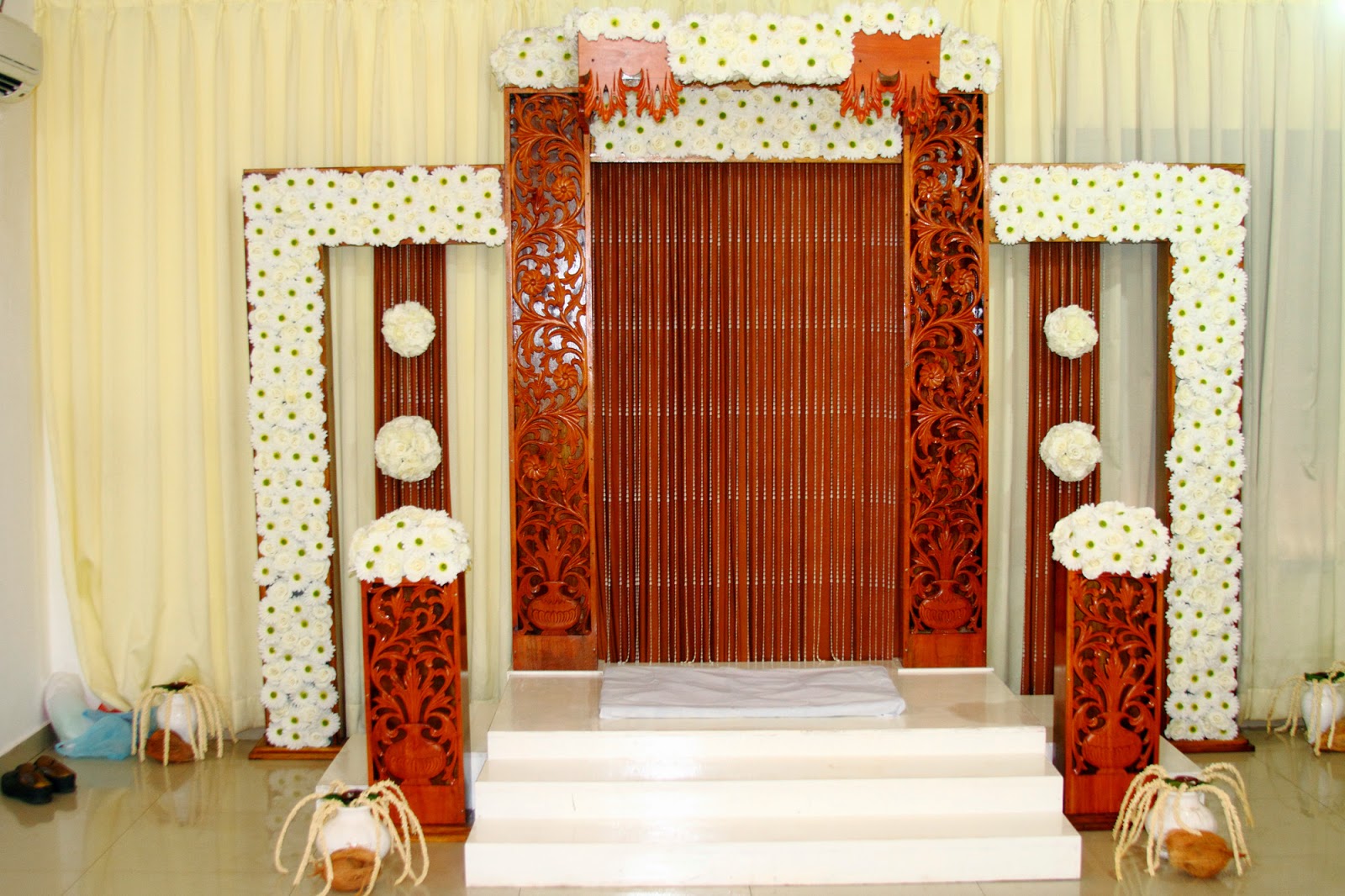Buddhist Weddings
Buddhist Weddings
Buddhist Weddings are influenced by the Hindu culture which gives prominence to ‘Nekath’, the auspicious times. The ‘Nekatha’ is derived from the horoscopes of the Bride and the Groom which is created based on their dates and times of birth. Of the many traditional events that take place during a Buddhist wedding, the ‘Poruwa’ ceremony is the most important. Therefore it is strictly guided by Nekath.
‘Poruwa’ is a beautifully decorated wooden platform on which the traditional Buddhist marriage ceremony takes place. Therefore this event is called the ‘Poruwa Siritha’ (Ceremony).
Poruwa Décor
Punkalas
Clay oil lamps
Jasmines
Grains of rice
Pori (roasted paddy)
Accessories
Kendya
Betel
Golden Thread
Wicks for lamps
Gifts for the parents
Performers
Kandyan Dancers – optional
Ashtaka Narrator
Troup to sing – Jayamangala Gatha
A close relative to tie the knot

The Poruwa Siritha
The Poruwa Siritha (Poruwa Ceremony) appears to have existed in Sri Lanka before the introduction of Buddhism in the 3rd Century B.C. Through the ages, many innovations have been introduced to the Poruwa Siritha. By and large, the men and women of present day society realize the value of their heritage and are motivated to protect and preserve something of their past for posterity.
The Poruwa Siritha was as valid custom as a registered marriage until the British introduced the registration of marriages by Law in 1870. Today’s
Poruwa Ceremony has been influenced by both upcountry and low country customs of Sri Lanka.

The bridegroom and party assemble on the left of the Poruwa
and the bridal party on the right. The bride and groom enter
the Poruwa leading with the right foot. They greet each other
with palms held together in the traditional manner.Shilpadhipathi (master of ceremonies) presents a hand of
betel leaves to the couple, which they accept and hand back to
him to be placed on a height of the Poruwa.This symbolises
the offering of betel to gods. The bride’s father places the
right hand of the bride on that of the groom as a symbolic
gesture of handing over the bride to the bridegroom.The groom’s brother hands a tray to the groom with seven
sheaves of betel leaves with a coin placed in each. The groom
holds the tray while the bride takes one sheaf at a time and
The groom’s brother hands a chain to the groom who in turn places it on the bride’s neck.
The bride’s maternal uncle enters the Poruwa, ties the small fingers of the bride and groom with a gold thread and then pours water over the fingers. Water and earth being the eternal verities, the water so poured and the earth on which it falls are intended to be the lasting witnesses to the marriage. The uncle then turns the couple clockwise, three times, on the Poruwa.
Next the groom presents to his bride a white cloth which in turn is presented to the bride’s mother. This is an expression of the groom’s gratitude to his mother-in-law for bringing up his bride.
Next, the groom’s mother will present the going away saree to the groom. The groom hands it over to the bride and she in turn gives it to her mother.
The bride’s mother will then present a plate of milk rice and kavum, cooked with special ingredients befitting a marriage ceremony, to the bride who feeds a piece of each to the bridegroom. The bridegroom feeds the bride in return.
As the newly weds step down from the Poruwa, helped by a couple from the bridegroom’s party, Shilpathipathi breaks a coconut in two.
The bridal couple lights a brass oil lamp to signify their resolve to keep the home fires burning.
